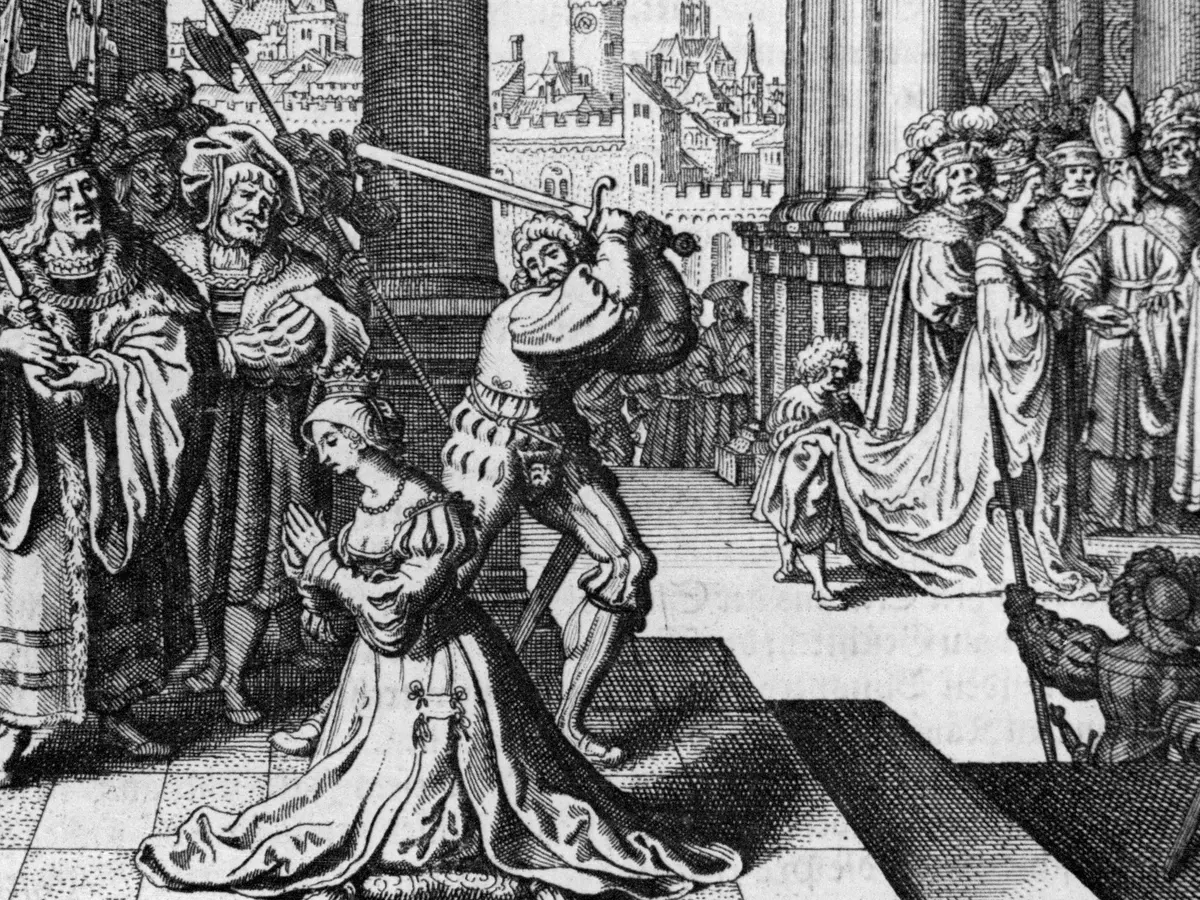Anne Boleyn is a prominent figure in English history, revered by some and condemned
by others. Her significance lies in her role as the second wife of King Henry VIII and the mother
of Queen Elizabeth I. This essay will provide an overview of Anne Boleyn's life, including her
early years, marriage to Henry VIII, downfall and execution, and legacy.
Anne Boleyn was born into a noble family in Norfolk around 1501. She received an
excellent education at various European courts before returning to England in 1522. Her father
served as an ambassador for King Henry VIII, which gave Anne access to court circles where
she met influential people who would later help promote her marriage to the king.
King Henry VIII first became interested in Anne when he saw her at court in 1525. They
fell deeply in love despite his being married to Catherine of Aragon at that time. The fact that he
wanted to annul his marriage with Catherine so that he could marry Anne set off a chain reaction
leading to events known as the English Reformation.
Anne played a major role during this period because she supported Protestantism unlike
Catherine who remained faithful Catholic until her death (Dewhurst). Once they were married on
January 25th, 1533, their union produced one daughter named Elizabeth I (Ostrikova et al.).
Unfortunately for Anne Boleyn things quickly turned sour after only three years into their
marriage; rumours circulated about infidelity from both parties which lead eventually lead them
down different roads (Hanley). King Henry was desperate for a son but was not able to have one
with Anne. Moreover many forces within the aristocracy despised how much power she held
over him; plotting against both herself and those aligned with her. As a result, she was accused of
adultery, incest and plotting to kill the king. Anne was tried in May 1536 on charges which were
at best flimsy evidence built against her (Maddock). She was found guilty and executed by
beheading on May 19th of that same year at the Tower of London.
Anne Boleyn's legacy is mainly seen through her daughter Elizabeth I who became one
of England's greatest monarchs. It is said that Anne instilled strong work ethics into Elizabeth
even though they only spent six months together before her death (Leadam). Elizabeth inherited
her mother’s intelligence and strength, becoming a key patron for arts such as literature and
music while avoiding mistakes made by other predecessors like Henry VIII.
In conclusion, Anne Boleyn remains an enigmatic figure throughout English history.
Despite being remembered primarily for her marriage to King Henry VIII, she lived a life filled
with intrigue and political maneuvering during one of England’s most tumultuous periods.
Though she met an unfortunate end due to political machinations beyond her control; Her
influence can still be felt today through generations after hers as well as within the very fabric of English culture itself.
Sources
Hanley, Anne R. Medicine, Knowledge and Venereal Diseases in England, 1886–1916. Medicine
and Biomedical Sciences in Modern History. Palgrave Macmillan, 2017, pp. 318.
Maddock, P. "Anne R. Hanley, Medicine, Knowledge and Venereal Diseases in England,
1886–1916." The Journal of Modern History, vol. 90, no. 2, 2018, pp. 482-484,
https://www.cambridge.org/core/services/aop-cambridge-core/content/view/4C943DBEB
BC97600EFAE1D28F5B6CD6F/S0021937118000382a.pdf.
Dewhurst, J. "The Alleged Miscarriages of Catherine of Aragon and Anne Boleyn." Medical
History, vol. 28, no. 1, 1984, pp. 1-20,
https://www.cambridge.org/core/services/aop-cambridge-core/content/view/BD5D12F00
00BC9B46BB8329A9D5D19AB/S0025727300035316a.pdf.
Ostrikova, Daria, Taras Bodnar, and Maksym Yasinskyi. "Influence of the Great Fire of London
in 1666 on Specifics of Creating Baroque Style of Churches in England." Lviv
Polytechnic National University Scientific Journal, vol. 979, 2022, pp. 130-136,
https://science.lpnu.ua/sites/default/files/journal-paper/2022/may/27963/14.pdf.
Leadam, I. S. The History of England from the Accession of Anne to the Death of George II.
(1702-1760)..., vol. 9, 2012,
https://archive.org/download/historyofengland09leaduoft/historyofengland09leaduoft_bw
.pdf.





No comments:
Post a Comment